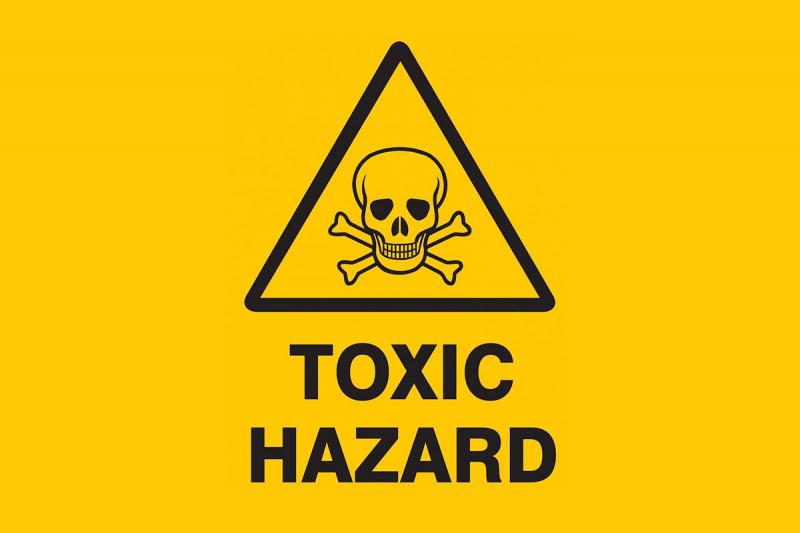
Complimentary Story
If you asked the general public what causes heart disease, you’d likely hear about high cholesterol, stress, obesity, poor diets, and lack of exercise. If you asked about cancer, popular answers may include smoking, genetics, and exposure to things like the sun or asbestos. Diabetes? Back to obesity, diet, and exercise. While these answers are a simplified reflection of current science, we are learning that they may not tell the whole story. More and more people in the medical and research communities are beginning to realize the important role that toxicity plays in chronic disease. In fact, many believe that toxicity is as important as any other single issue when it comes to treating chronic disease.
Think about how many people suffer from Alzheimer’s and dementia today.
Think about all of the infertility issues young people encounter.
Think about the rates of asthma, ADHD, and Autism in our kids.
Why didn’t we have all of these problems a generation or two ago?
TOXICITY AND CHRONIC DISEASE
Chronic disease of all types is skyrocketing in the US today. Over half of all adults have one or more chronic health conditions. Seven of the top 10 causes of death in 2010 were chronic diseases, with heart disease and cancer accounting for nearly 48% of all deaths.1
At the same time chronic disease has been skyrocketing, toxicity in our environment is growing, and toxicity in our bodies is increasing. It’s becoming more and more evident in the scientific community that toxicity plays an important role in chronic disease.
But who is really exposed to dangerous chemicals? Mostly factory and field workers, right? Wrong!
TOXINS IN EVERYDAY LIFE
According to the Environmental Working Group (EWG), U.S. chemical companies hold licenses to make 75,000 chemicals for commercial use, and 2,000 new chemicals are registered each year.2
- 5,000 chemical ingredients in cosmetics
- 3,200+ chemicals added to food
- 1,010 chemicals used in 11,700 consumer products
- 500 chemicals used as active ingredients in pesticides 2
Aside from the sheer number of chemicals found in our daily life, what’s surprising to most consumers is that most of the chemicals in consumer products WERE NEVER TESTED FOR SAFETY.3
“That can’t be right,” you say. “They wouldn’t allow them to be used if they weren’t safe.”
Well, they used to use lead in paint, until they figured out it wasn’t safe.
The reality is this: with 2,000 new chemicals being introduced into our everyday lives each year, there is no possible way to know about the long-term safety, or more likely dangers, of exposure to these chemicals either alone or in combination with one another.
And, unfortunately, politics play a role. But even if they didn’t, how could government protective agencies, like the FDA, EPA, and CPSC, possibly keep up?
Some industries have a level of self-regulation in place. For example, the personal care product industry has the Cosmetic Ingredient Review panel. However, their review treats each product as though it were the only source for exposure to a particular chemical and as though consumers were only exposed to one chemical at a time. However, neither of these scenarios reflect real life considering that the average adult uses multiple personal care products each and every day. And, since many of these chemicals stay in our bodies for some time, so we’re not starting with a clean slate each day.
BODY BURDEN
“Body Burden” is the term that’s been coined to describe the number of chemicals that can be found in the average person. An individual’s body burden is the cumulative result of a lifetime of being exposed to plastics, metals, pesticides, and all of the other thousands of ways we come into contact with chemicals in our daily life.
What’s even scarier is the research that suggests how exposure is impacting our kids. Studies have found chemicals in the umbilical cord blood of newborns, while other research suggests a link between toxicity and early puberty and childhood obesity.4
Simply put, it all adds up. And, as chemicals build up in our bodies, they absolutely can impact how our bodies function.
For example, toxicity has been tied to the development of diabetes. Scientists have found that increased levels of heavy metals and organic pollutants affect the proper function of the cells in the pancreas. Exposure to these toxins also impacts the way other cells in the body respond to insulin. These two factors combined lead to an increased risk of diabetes.
CONTROL WHAT YOU CAN CONTROL
It can be a bit overwhelming to think about all of the ways that we are exposed to chemicals and try and figure out how to limit our exposure. The truth is, there are some things that we really can’t do too much about, an example being the toxins in the air we breathe. (Unless, of course, you’re an activist-minded individual who wishes to get involved in state and federal government.)
For the rest of us, it’s about becoming educated and controlling what we can control. That includes making better lifestyle choices to reduce known toxic exposure. But as you seek to become educated, be sure that you are using reliable sources. The information on these topics is exploding on the internet and it can take diligence on your part to make sure that you are getting sound advice.
One of the best resources I’ve found for consumers is the Environmental Working Group. The EWG is “a non-profit, non-partisan organization dedicated to protecting human health and the environment.” Their “mission is to empower people to live healthier lives in a healthier environment. With breakthrough research and education, we drive consumer choice and civic action.” (www.EWG.org).
You also want to be sure that you’re maximizing your body’s ability to detoxify. That means that you’re eating a nutrient-rich diet and getting regular exercise to enable your body to be working at peak performance levels.
ARE YOU TOXIC?
The vast majority of adults likely have toxicity issues, but you don’t realize it because no one has tied your health concerns back to toxicity. And, as stated at the onset of this article, this connection is just beginning to be fully appreciated.
The good news is that testing does exist to help us uncover toxicity issues, and treatment protocols exist that are proven to reduce toxic load.
The science of Functional Medicine and clinical nutrition offer different approach to treating chronic disease. This evidence-based approach works to uncover the origin of disease based on how an individual’s environment and lifestyle interact with his or her genetic disposition. Lab testing, including toxicity testing, combined with a thorough understanding of a patient’s health history and current status, are used to determine the underlying cause of a patient’s condition. Detailed treatment plans are then developed to correct imbalances found in the body, and may include lifestyle modifications, dietary changes, and often nutraceutical supplementation.
To learn if Functional Medicine could help you, call 715-355-4224 to schedule a no-charge consultation at our Weston clinic.
Dr. Kevin Ritzenthaler, DC, DCBCN
Draeger Chiropractic & Laser Center, Weston
715-355-4224
DraegerChiro.com
References:
1 Chronic Disease Overview: Chronic Diseases: The Leading Causes of Death and Disability in the United States, retrieved from: https://www.cdc.gov/chronicdisease/overview/
2 How Do Chemicals End Up in My Body, [blog post] retrieved from: http://www.ewg.org/sites/bodyburden1/factsheets/howcontam.php
3 EWG Lists the Top 10 Toxic Chemicals EPA Should Review Now, [press release] retrieved from: http://www.ewg.org/release/ewg-lists-top-ten-toxic-chemicals-epa-should-review-now
4 Body Burden and Chronic Disease and Detox, (2015, November 6) retrieved from: http://www.arizonaadvancedmedicine.com/Articles/2015/November/Body-Burden-and-Chronic-Disease-and-Detox.aspx



